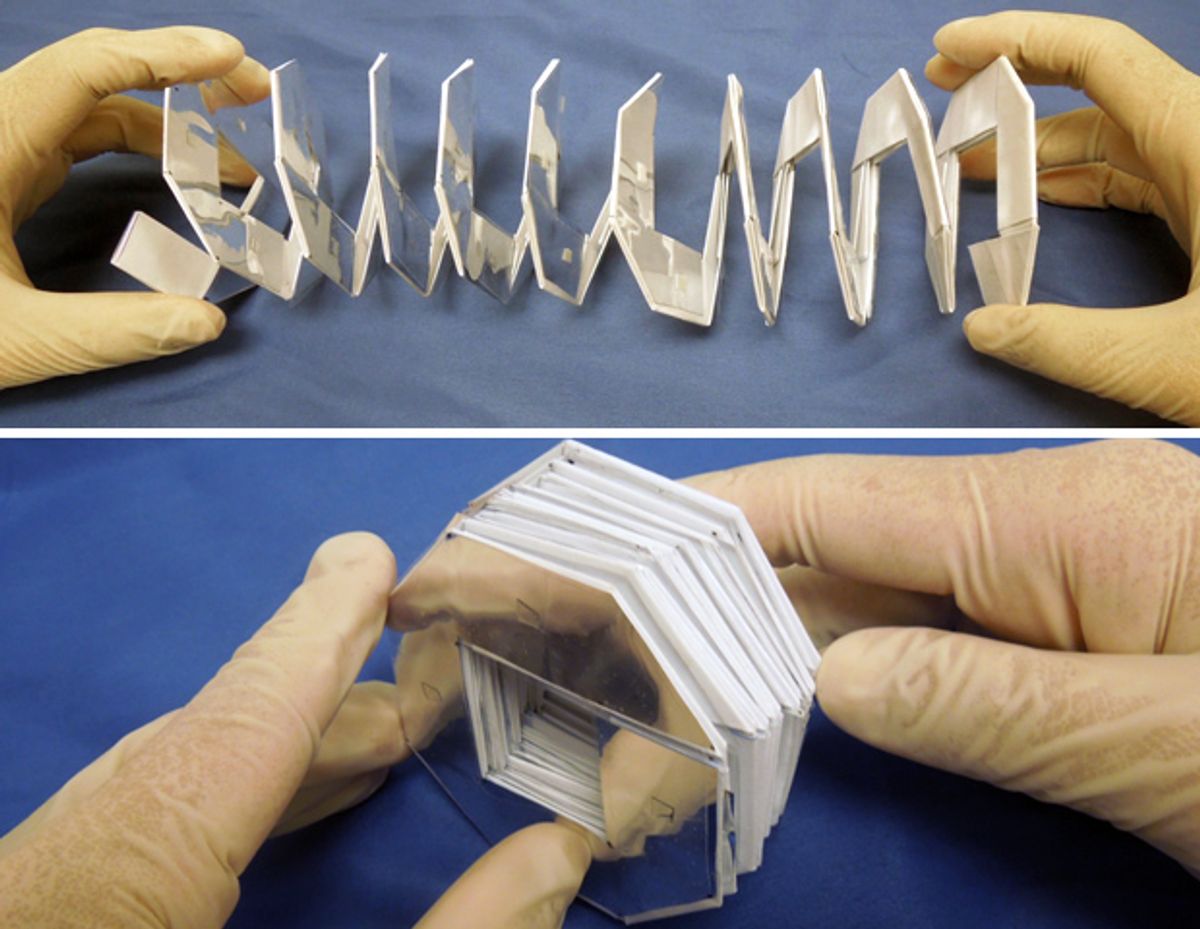Origami that harvests energy from the same effect behind most static electricity could eventually be used to power electronics in a cheap, lightweight, environmentally friendly way.
Static electricity usually results from a phenomenon called triboelectricity. When two different materials repeatedly come into contact and then separate, the surface of one material can steal electrons from the surface of the other. This is why rubbing your feet on a carpet or a running comb through your hair can build up static electricity.
Scientists have now developed origami that could take advantage of triboelectricity to power devices. The fact that paper "is probably the most popular and cheap material available" could make triboelectric generators cheap, recyclable, and widely used, said researcher Zhong Lin Wang, a nanotechnologist at the Georgia Institute of Technology in Atlanta.
The researchers started with regular printer paper, and then use glue sticks to paste on thin sheets of aluminum foil and Teflon. This paper was then folded into Slinky and other shapes.
When the Slinky origami was compressed, the paper and Teflon came into contact, and when this force was released, they separated, resulting in triboelectric charging. Electricity could then flow out the aluminum foil via copper wires. The prototype slinky provided a voltage of 20 V, a current of 2 micro-amperes, and a peak power density of 0.14 watts per square meter, enough to light up four commercial LEDs simultaneously. The origami could also serve as a simple pressure sensor when connected to a voltage meter — for example, it could distinguish coins of different weights based on the voltages that resulted when the coins were dropped on the origami.
Wang said this strategy could work with many other materials — "fabric, plastics, rubber, metal and ceramics," he noted. "Our goal is to use this technology as an effective power supply for an 'Internet of Things' and sensor networks."
The scientists detailed their findings online Jan. 2 in the journal ACS Nano.
Charles Q. Choi is a science reporter who contributes regularly to IEEE Spectrum. He has written for Scientific American, The New York Times, Wired, and Science, among others.



